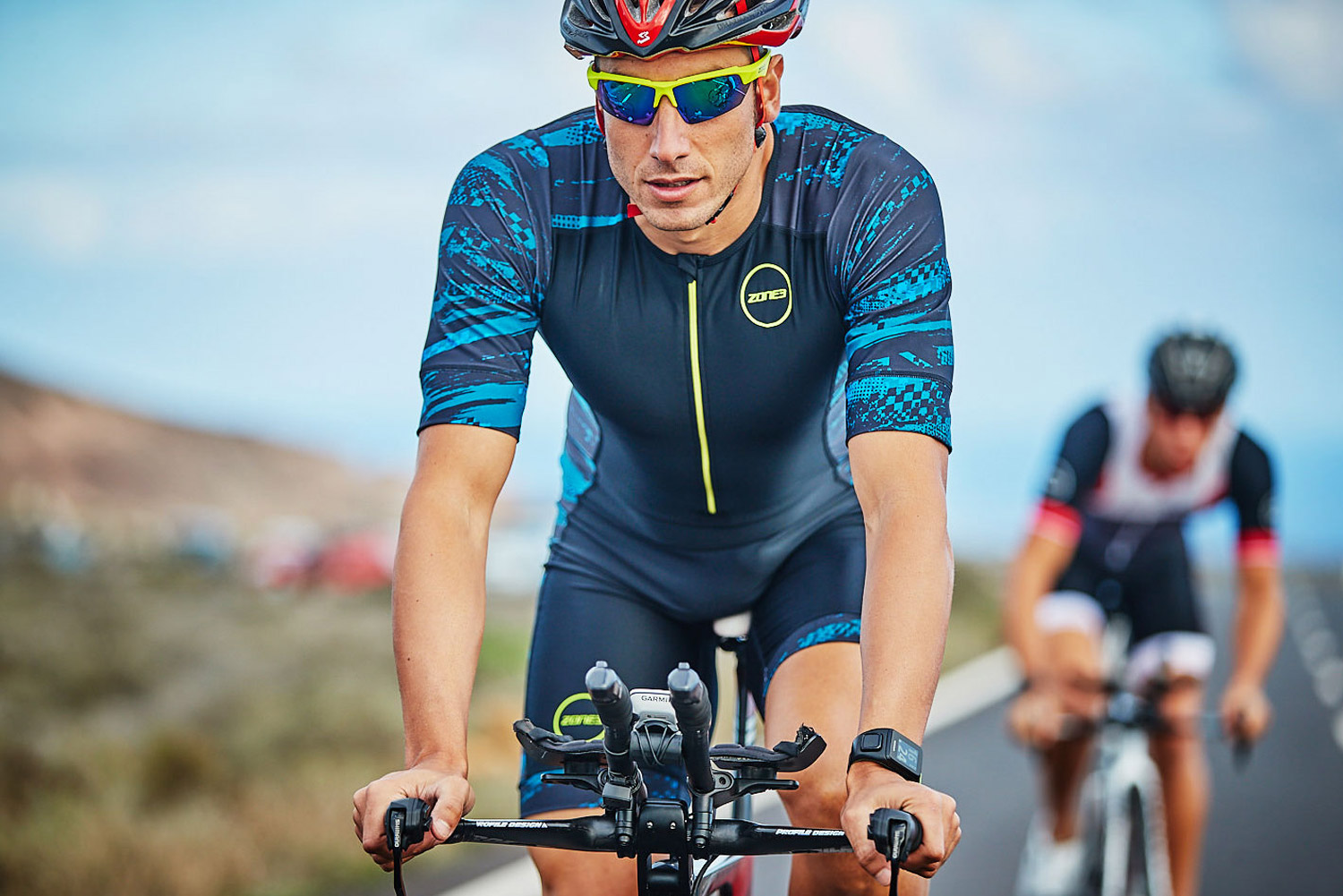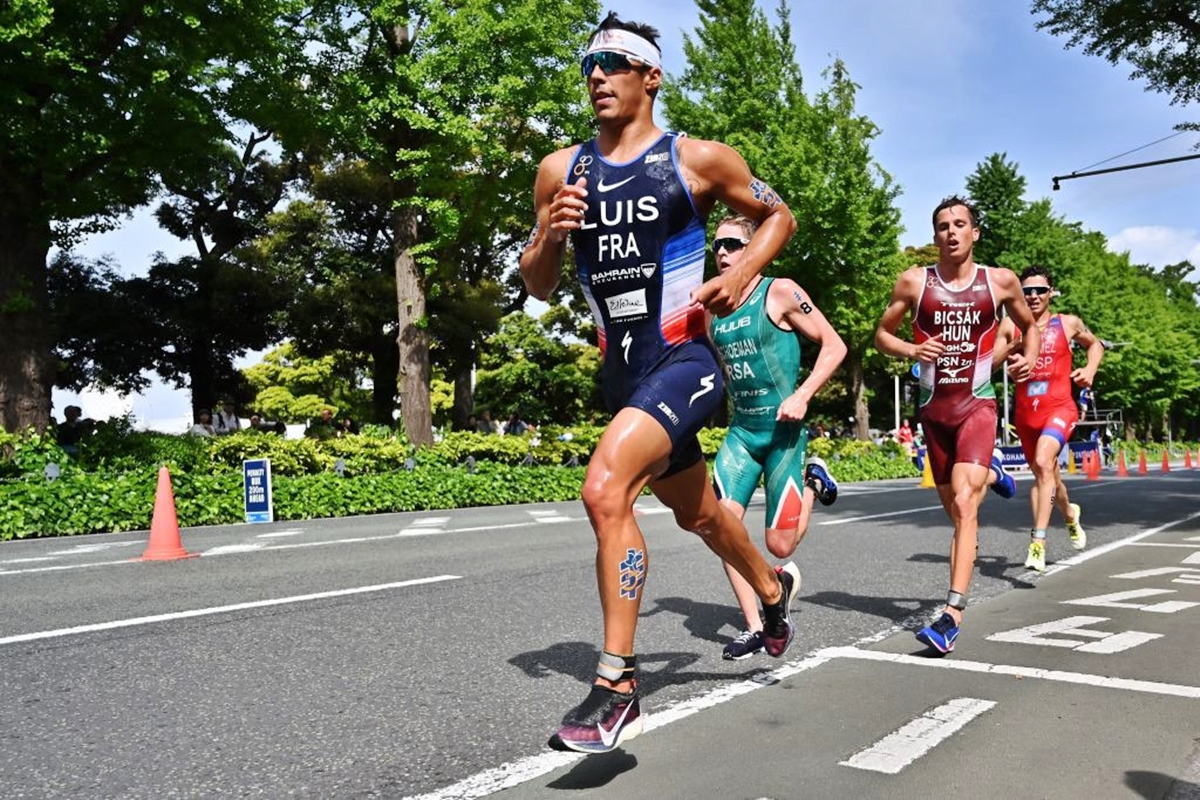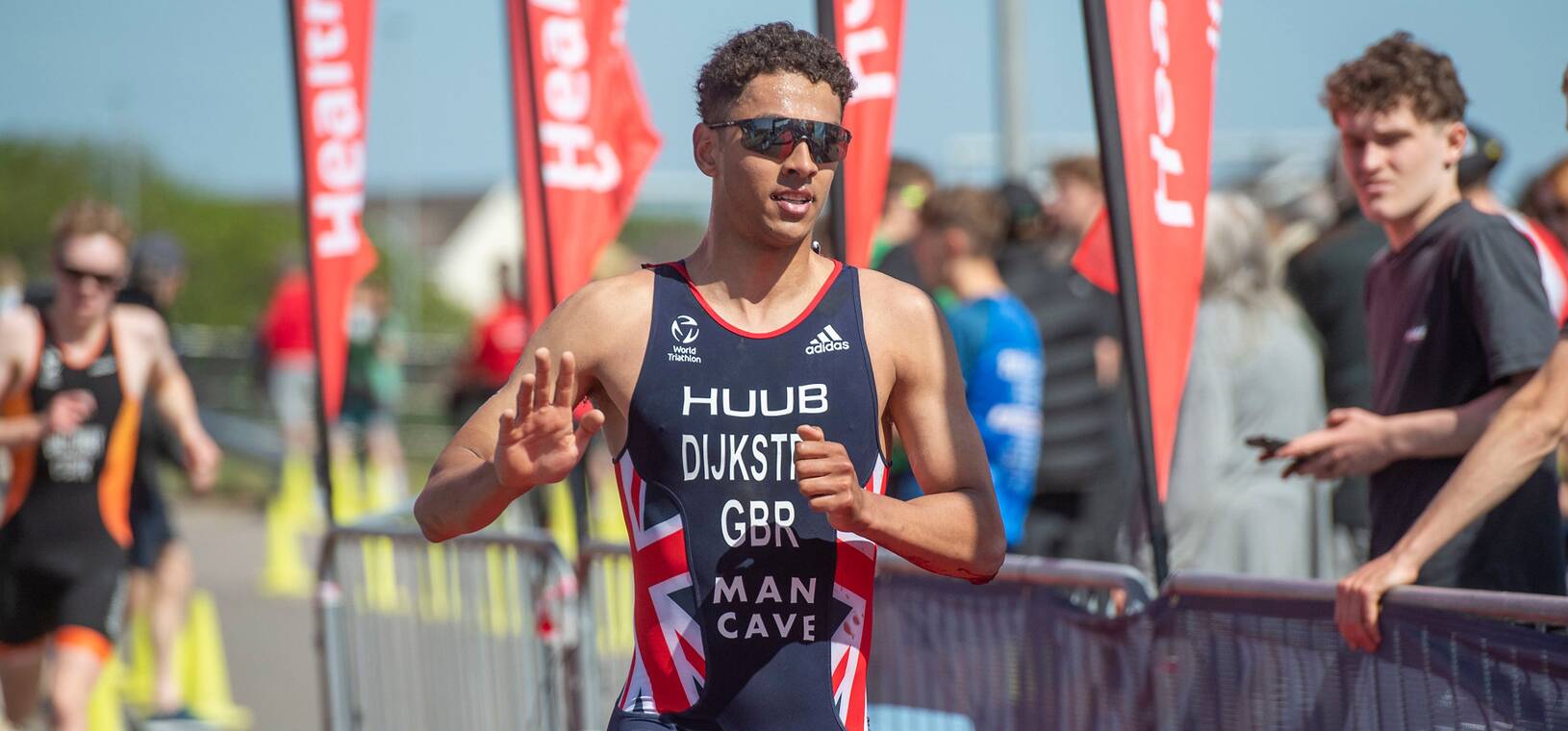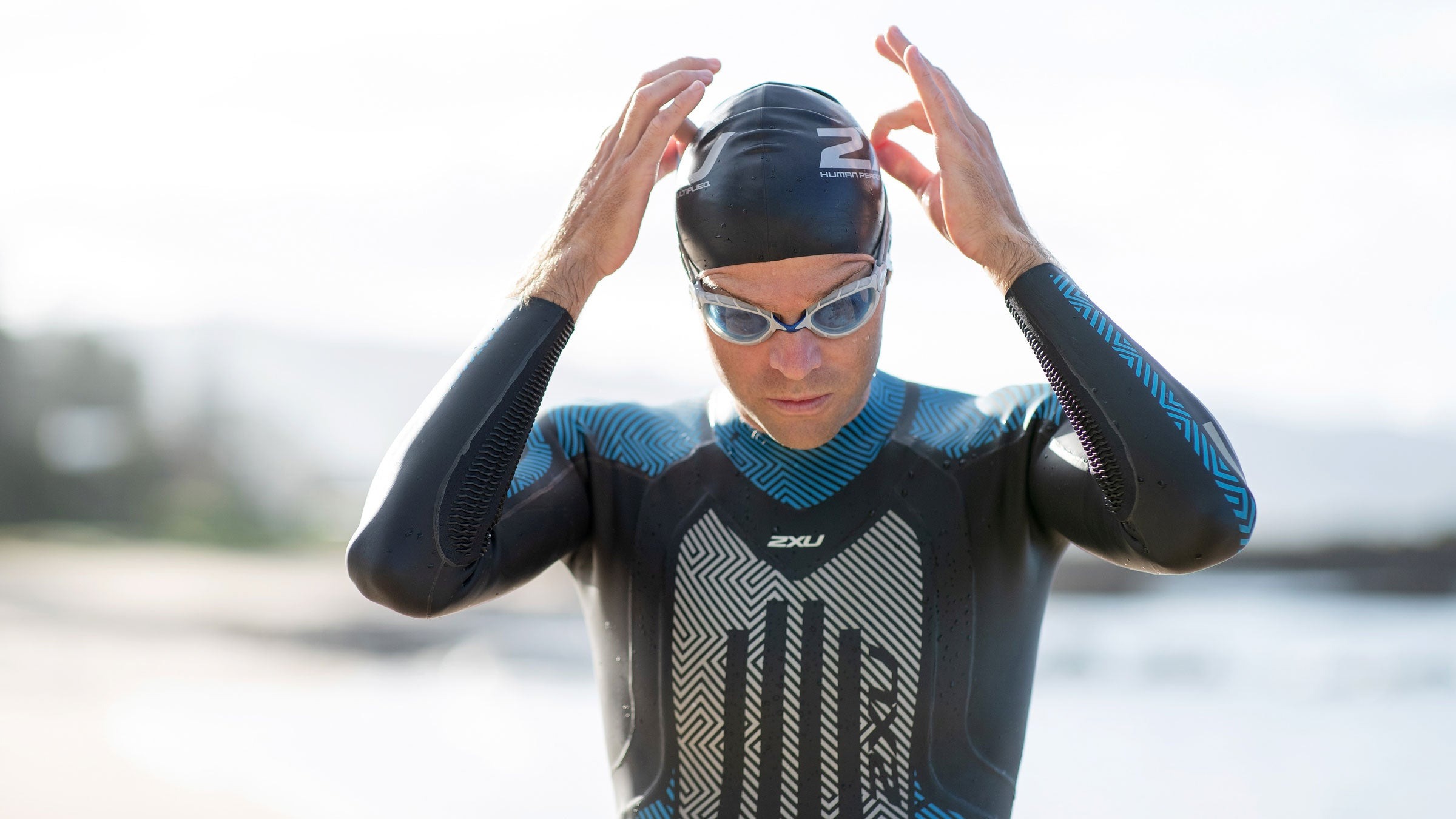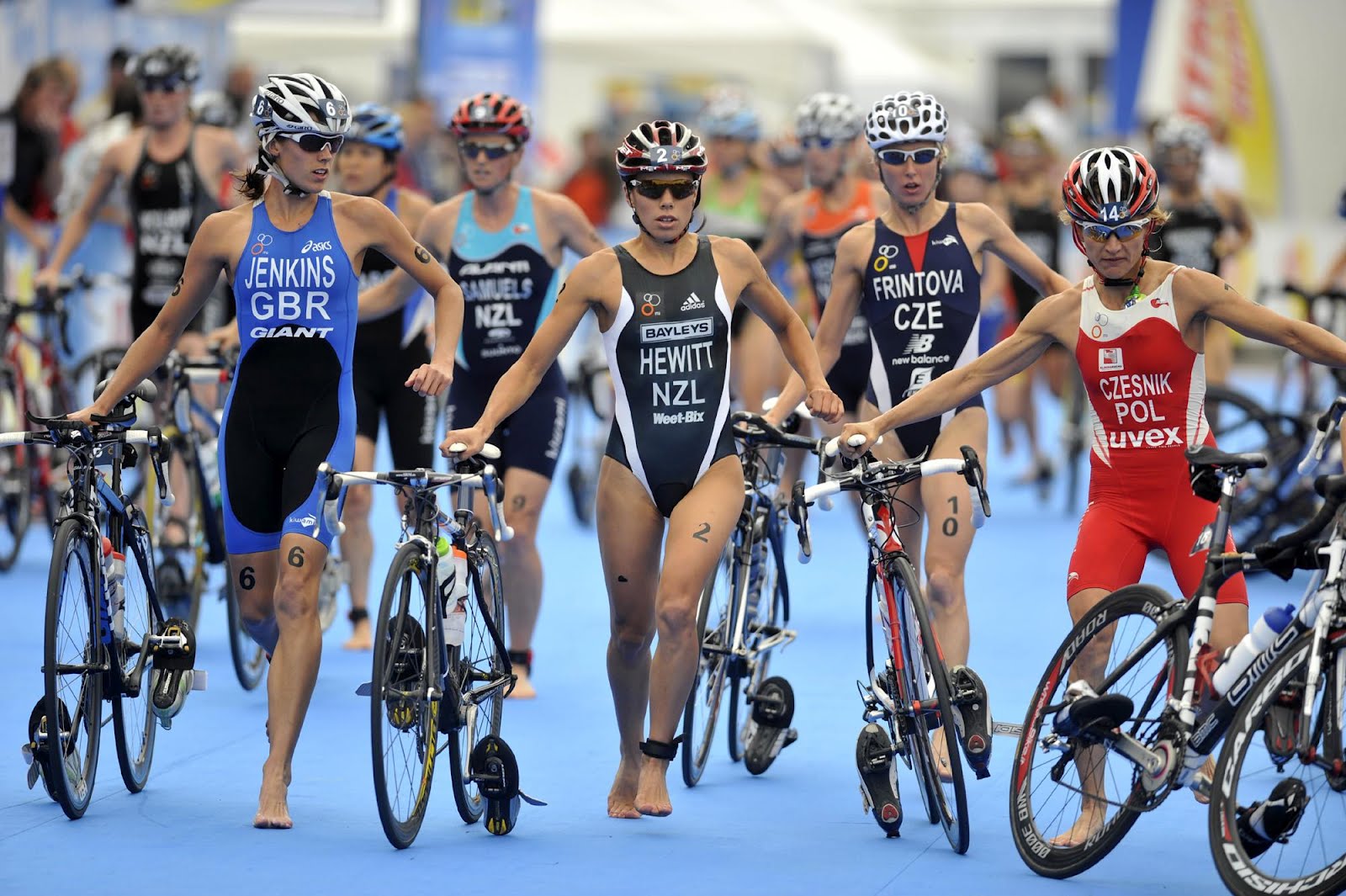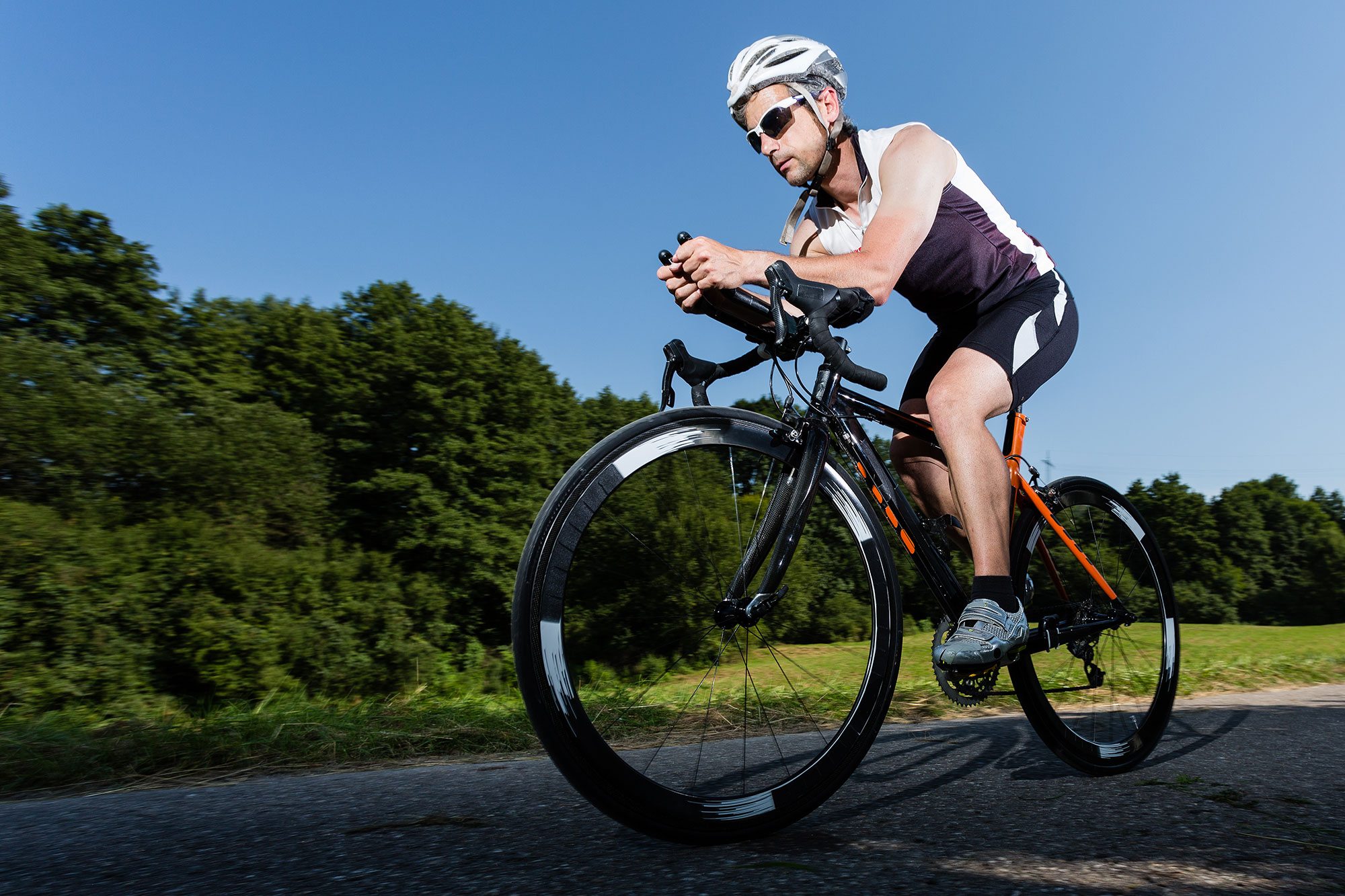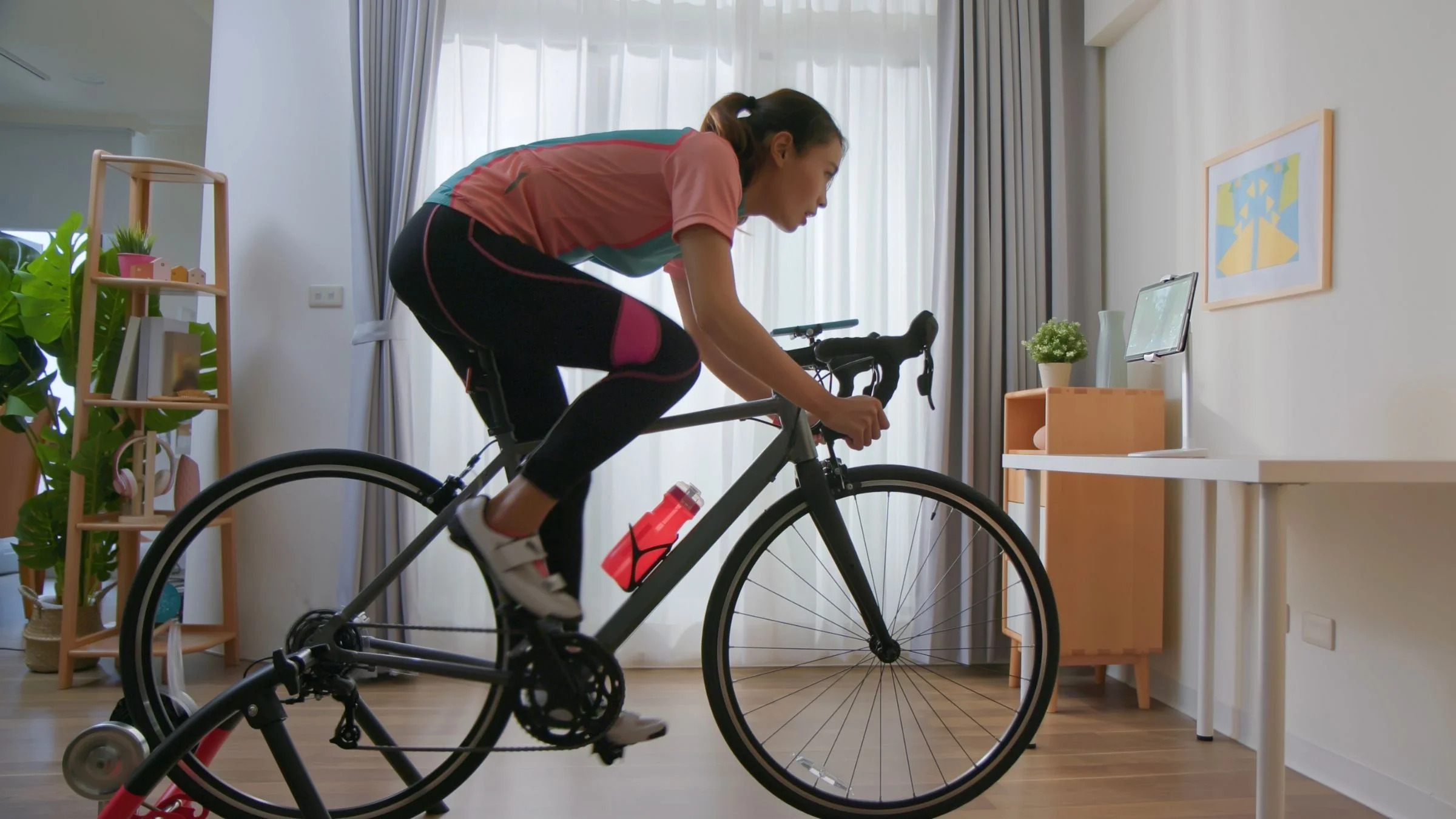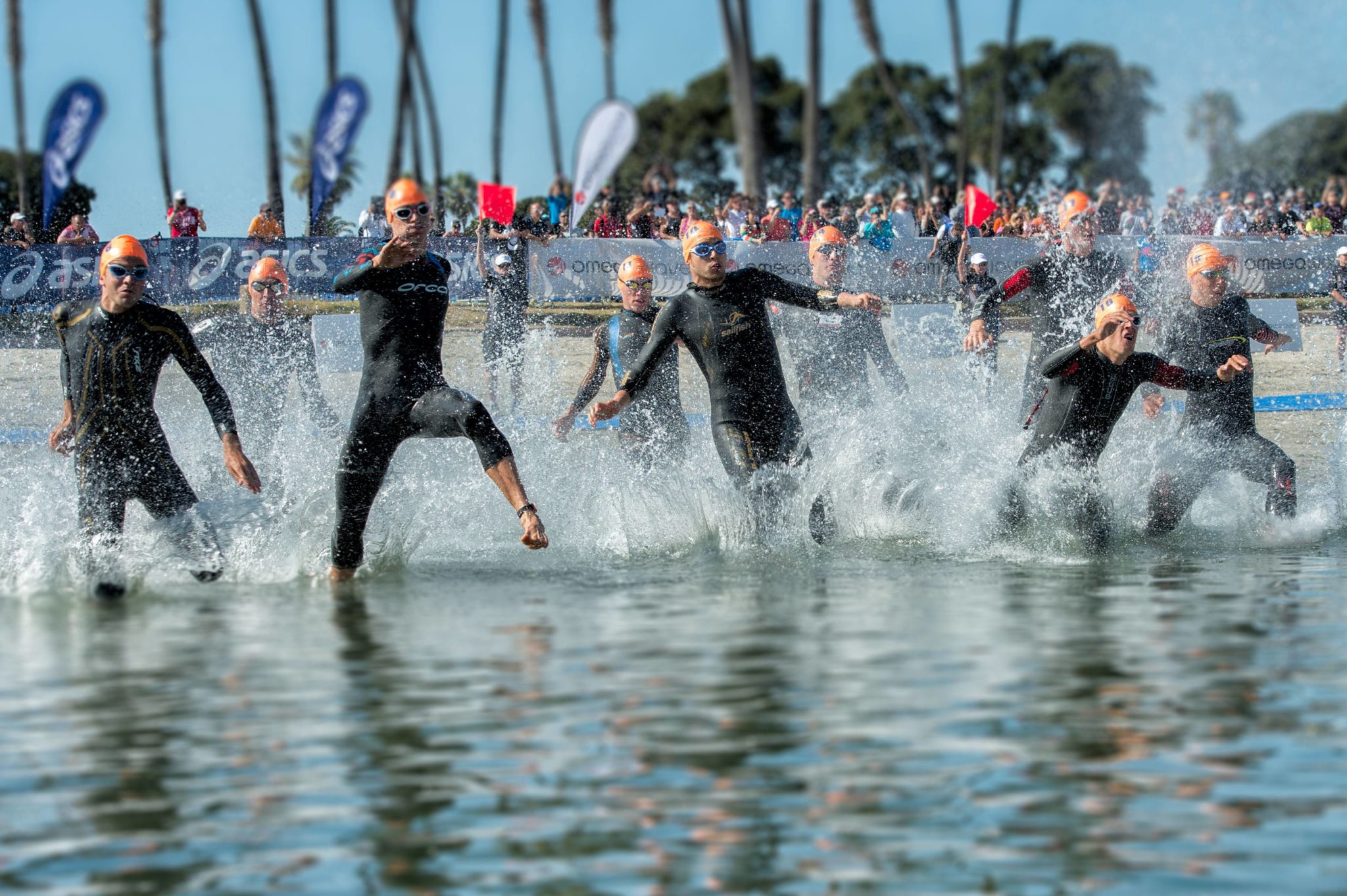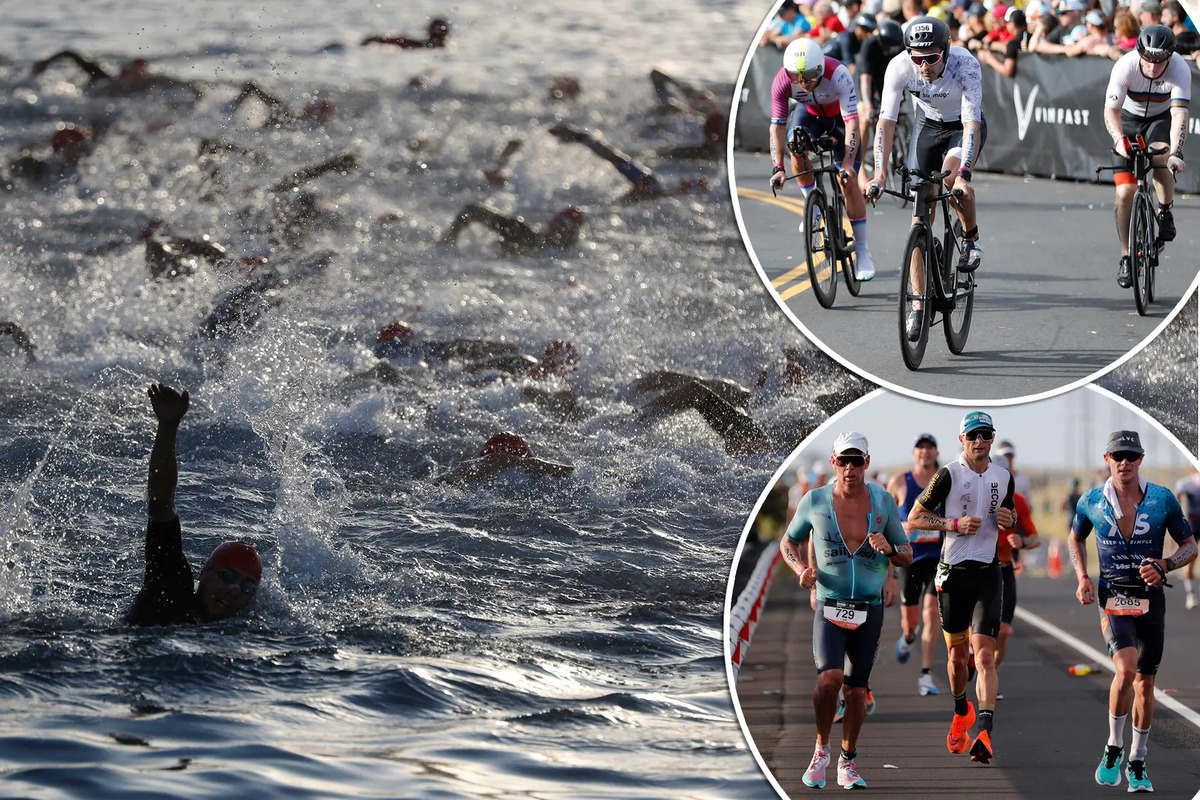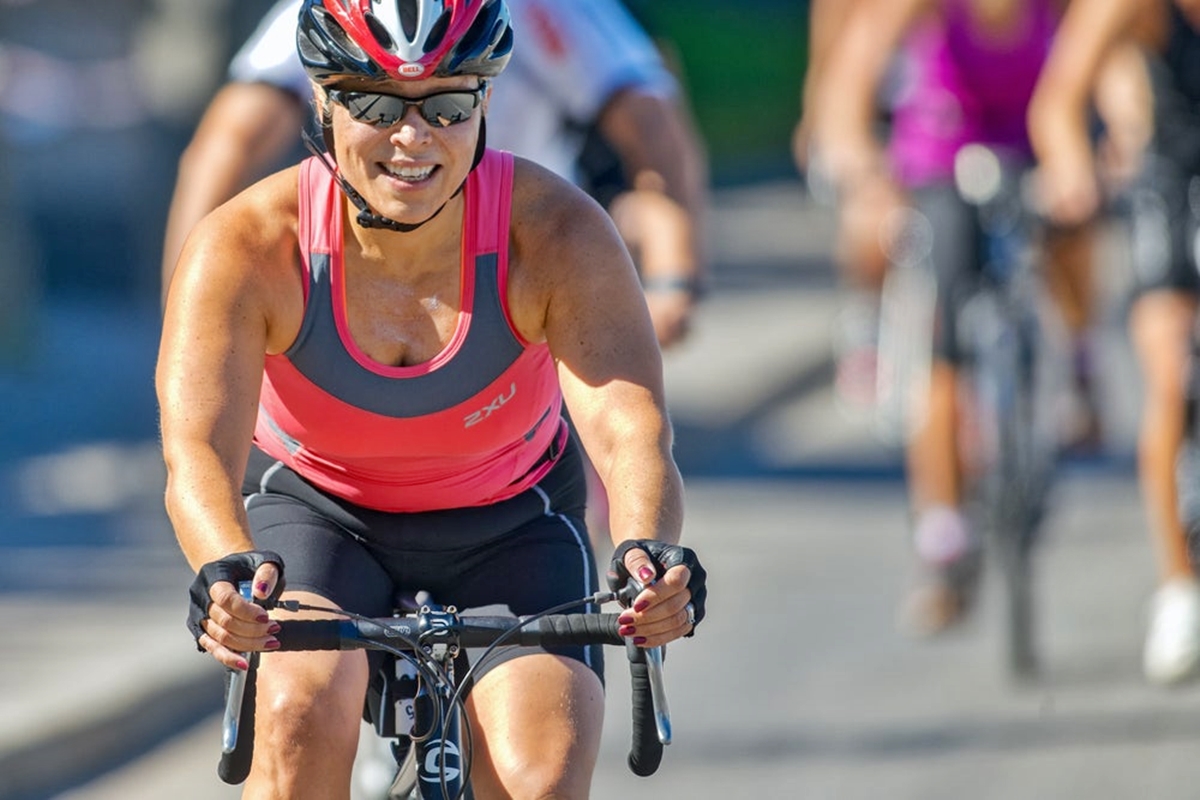Home>Misc>Featured>What Is The Best Practice For Doing A Triathlon
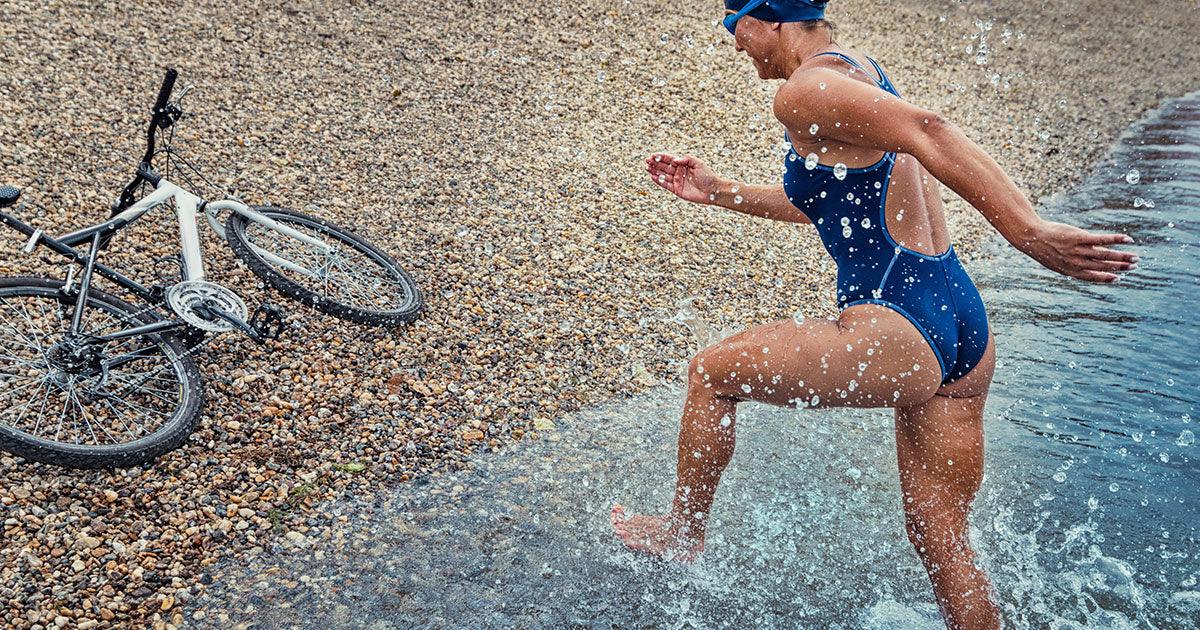

Featured
What Is The Best Practice For Doing A Triathlon
Modified: March 1, 2024
Discover the best practice for doing a triathlon with our featured tips and expert advice. Reach peak performance and achieve your goals with our proven strategies.
Introduction
Welcome to the exciting world of triathlons! Whether you’re a seasoned athlete or a newcomer to the sport, participating in a triathlon can be both challenging and rewarding. Triathlons test your endurance, strength, and mental fortitude as you swim, bike, and run your way to the finish line.
Triathlons come in various distances, from the sprint distance with a 750-meter swim, a 20-kilometer bike ride, and a 5-kilometer run, to the Ironman distance with a 3.8-kilometer swim, 180-kilometer bike ride, and 42.2-kilometer run. Choosing the right triathlon for your fitness level and goals is key to a successful and enjoyable experience.
Before diving into the training and preparation, it’s important to highlight the benefits of participating in a triathlon. Engaging in this multisport event not only helps you improve cardiovascular fitness, build strength and endurance, but it also fosters mental resilience, discipline, and goal-setting skills.
In this article, we will explore the best practices for training and preparing for a triathlon, as well as provide valuable insights into proper nutrition, equipment, and strategies to help you excel in each leg of the race. Let’s dive in!
Choosing the Right Triathlon
When it comes to triathlons, one size does not fit all. There’s a wide variety of triathlon distances available, each catering to different fitness levels and goals. Choosing the right triathlon is crucial to ensure a positive and enjoyable experience. Here are some factors to consider when selecting a triathlon:
- Distance: Triathlons come in various distances, ranging from sprint to Olympic to half Ironman to Ironman. Assess your current fitness level and set realistic goals before deciding on a distance that suits you.
- Location: Consider the location of the triathlon. Do you prefer a race near your home or at a scenic destination? Take into account factors such as climate, terrain, and altitude when choosing a location.
- Course: Research the course profile of the triathlon. Is it hilly or flat? Does it include open water swimming or a pool swim? Assess your strengths and weaknesses in each discipline to determine if the course aligns with your abilities.
- Time of Year: Consider the time of year the triathlon takes place. Are you comfortable training and racing in hot weather or prefer a cooler climate? Choose a date that suits your preferences and allows for adequate training time.
- Registration and Cost: Take a look at the registration fees and any additional costs associated with the triathlon. Factor in travel expenses, accommodation, and equipment costs to ensure it fits within your budget.
- Atmosphere and Community: Consider the atmosphere and community surrounding the triathlon. Do you prefer a large, competitive event or a smaller, more intimate race? Engaging with like-minded individuals can enhance your experience and provide a support network.
Remember, the most important aspect is to choose a triathlon that aligns with your goals and capabilities. Whether you’re looking to challenge yourself or simply want to experience the thrill of a triathlon, selecting the right event sets the foundation for a successful journey.
Training for the Triathlon
Training for a triathlon requires a well-rounded approach that focuses on improving endurance, strength, and technique in each discipline: swimming, cycling, and running. Here are some essential training tips to help you prepare for the triathlon:
1. Develop a Training Plan
Create a structured training plan that includes a balance of swim, bike, and run workouts, along with rest and recovery days. Gradually increase the intensity and duration of your workouts to prevent overtraining and reduce the risk of injuries.
2. Swim Training
Focus on improving your swimming technique and building endurance. Incorporate drills and interval training to enhance your stroke efficiency and speed. Additionally, practice open water swimming to acclimate to unpredictable conditions.
3. Cycling Training
Build up your cycling endurance by incorporating long rides into your training schedule. Don’t forget to include hill climbs and interval training to improve strength and power. Familiarize yourself with the rules of the road and practice bike handling skills for safety.
4. Running Training
Gradually increase your running distance and incorporate interval training to improve speed and endurance. Focus on proper running form and incorporate strength training exercises to prevent injuries.
5. Brick Workouts
Integrate “brick” workouts into your training plan, which involve combining two disciplines back-to-back, such as a bike session followed immediately by a run. This will help your body adapt to the unique demands of transitioning between disciplines during the triathlon.
6. Cross-Training and Strength Training
Incorporate cross-training activities such as yoga, swimming or weightlifting to improve overall strength, flexibility, and prevent muscular imbalances. Strengthen your core muscles as they play a crucial role in maintaining stability during all three disciplines of the triathlon.
7. Rest and Recovery
Don’t overlook the importance of rest and recovery in your training plan. Allow your body time to adapt and repair itself through proper sleep, nutrition, and active recovery exercises such as stretching and foam rolling.
Remember to listen to your body and adjust your training plan accordingly. It’s normal to experience setbacks or unexpected obstacles along the way, but staying consistent, dedicated, and disciplined will eventually lead you to the finish line of your triathlon.
Proper Nutrition for Triathletes
Nutrition plays a crucial role in fueling your performance and helping you recover effectively during training and on race day. Here are some key nutrition guidelines to optimize your triathlon performance:
1. Fueling for Training
Prioritize a well-balanced diet that includes carbohydrates, proteins, and healthy fats. Carbohydrates provide the energy needed for endurance training, while protein supports muscle repair and recovery. Aim to consume a balanced meal or snack containing all three macronutrients before and after each training session.
2. Hydration
Stay hydrated before, during, and after workouts. Adequate fluid intake is essential for maintaining performance and preventing dehydration. Drink fluids with electrolytes to replenish sodium and other minerals lost through sweat.
3. Race Day Nutrition
Practice your nutrition strategy during training sessions to determine what works best for you on race day. Consume easily digestible carbohydrates such as energy gels, sports drinks, and fruits to maintain energy levels during the race. Don’t forget to stay hydrated by sipping on water throughout the event.
4. Recovery Nutrition
After each training session or race, prioritize post-workout nutrition to support muscle recovery. Consume a combination of carbohydrates and protein within 30 to 60 minutes of finishing your workout. This can be in the form of a recovery shake, a balanced meal, or a combination of foods that provide these essential nutrients.
5. Proper Timing and Portion Control
Space out your meals and snacks throughout the day to provide a steady stream of energy and prevent energy crashes. Pay attention to portion control to avoid consuming too much or too little food. Listen to your body’s hunger and fullness cues, and adjust your intake accordingly.
6. Nutrient-Dense Foods
Incorporate a variety of whole, nutrient-dense foods into your diet. These include fruits, vegetables, whole grains, lean proteins, and healthy fats. These foods provide essential vitamins, minerals, and antioxidants to support overall health and performance.
7. Supplements
Consider consulting a sports dietitian to determine if any specific supplements may be beneficial for your training and performance. Popular supplements among triathletes include electrolyte tablets, omega-3 fatty acids, and vitamin D.
Remember, proper nutrition is a key component of reaching your triathlon goals. Experiment with different nutrition strategies during training and find what works best for you, considering factors such as individual preferences, gastrointestinal tolerance, and performance outcomes.
Equipment and Gear for the Triathlon
Participating in a triathlon requires specific equipment and gear to ensure both safety and performance. Here are the essential items you’ll need for each discipline of the triathlon:
1. Swim
Swimming requires a few key pieces of equipment:
- Swimsuit: Choose a comfortable and well-fitting swimsuit that allows for ease of movement.
- Swim Cap: A swim cap helps streamline your head and reduces drag in the water. It also keeps your hair out of your face.
- Goggles: Invest in a good pair of goggles that fit well and provide clear vision in the water.
- Wetsuit (optional): Depending on the water temperature and race rules, you may need a wetsuit to provide buoyancy and insulation.
2. Bike
When it comes to cycling, the right equipment can significantly impact your performance:
- Triathlon or Road Bike: Opt for a triathlon-specific or road bike that suits your budget and riding style. Make sure it’s properly fitted to your body to ensure comfort and efficiency.
- Cycling Helmet: Always wear a properly fitted helmet to protect yourself in case of a fall or accident.
- Cycling Shoes and Pedals: Invest in cycling shoes and clipless pedals to maximize power transfer and efficiency during the biking leg.
- Cycling Shorts: Padded cycling shorts provide comfort and reduce friction during long rides.
- Water Bottle and Hydration System: Stay hydrated during the bike leg with a water bottle or a hydration system mounted on your bike.
3. Run
For the running leg of the triathlon, these are the essential items:
- Running Shoes: Invest in a quality pair of running shoes that provide proper support and cushioning for your feet.
- Running Apparel: Choose moisture-wicking and comfortable clothing for the running leg.
- Visor or Hat: Protect yourself from the sun with a visor or hat to shield your face and help you stay cool.
- Race Belt: A race belt with number attachments allows you to easily display your race bib during the run.
4. Transition Area
Organize your gear efficiently in the transition area by having the following items:
- Towel: Place a towel near your bike to dry off after the swim and to clean your feet before putting on your cycling shoes.
- Sunglasses: Protect your eyes from the sun and wind during the bike and run legs.
- Extra Clothing (if needed): Depending on weather conditions, you may need additional layers or clothing changes during the race.
- Other Essentials: Include sunscreen, race nutrition, and any personal items you may need.
Remember to practice using your equipment and gear during training to ensure everything fits well and functions properly on race day. Having the right equipment will not only enhance your performance but also make the entire triathlon experience more enjoyable.
Preparing for the Swim
Swimming is often the first discipline in a triathlon, and proper preparation is essential to set a strong foundation for the rest of the race. Here are some key tips to help you prepare for the swim leg:
1. Technique and Skill Development
Focus on improving your swimming technique and building endurance. Take swim lessons or work with a swim coach to refine your strokes and breathing technique. Incorporate drills that target specific aspects of your swim form, such as body position, catch, and kick.
2. Open Water Practice
If possible, practice swimming in open water prior to the race. Open water swimming can be different from pool swimming due to factors such as waves, currents, and visibility. Familiarize yourself with sighting techniques to stay on course and practice drafting behind other swimmers to conserve energy.
3. Pool Training
If open water swimming is not accessible, make the most of your pool training sessions. Incorporate interval training, endurance sets, and drills to improve your swim fitness. Practice simulating race conditions by swimming a set distance without stopping, as this will help build your stamina and mental resilience.
4. Familiarize Yourself with the Course
Study the course map and become familiar with the swim route before the race. Understand any specific landmarks, buoys, or turns you need to navigate during the swim leg. This will help reduce anxiety and ensure you swim efficiently and on course.
5. Practice Transitions
Incorporate swim-to-bike transitions, often referred to as “T1”, into your training sessions. Practice removing your wetsuit quickly (if applicable) and getting into your cycling gear efficiently. This will help you save precious time during the race and smoothly transition from the swim to the bike leg.
6. Manage Pre-Race Jitters
Nerves and pre-race jitters are common before any race, especially the swim. Develop a pre-race routine to help you relax and mentally prepare. Deep breathing exercises, visualization, and positive self-talk can be effective strategies to manage anxiety and build confidence before diving into the water.
7. Safety First
Always prioritize safety during the swim leg. Familiarize yourself with the race’s water safety protocols and signage. If you experience any discomfort or struggle during the swim, signal for assistance or find a nearby safety kayak or paddleboard for support.
By focusing on technique, practicing in different swim environments, and familiarizing yourself with the race course, you’ll be well-prepared to tackle the swim leg of your triathlon. Remember to stay calm, trust your training, and enjoy the experience!
Strategies for the Cycling Leg
The cycling leg of a triathlon is often the longest portion of the race, and it’s important to have effective strategies in place to maximize your performance. Here are some key strategies to help you excel during the cycling leg:
1. Pace Yourself
Start the bike leg at a sustainable pace that allows you to maintain a steady effort throughout the ride. Avoid going too hard too early, as this can lead to burnout later in the race. Monitor your heart rate or perceived exertion to ensure you’re maintaining an appropriate effort level.
2. Efficient Technique
Focus on maintaining an efficient cycling technique throughout the race. This includes maintaining a smooth pedaling cadence, keeping your upper body relaxed, and engaging your core for stability. Practice proper bike handling skills such as cornering, descending, and riding in a straight line.
3. Nutrition and Hydration
Eat and drink regularly during the bike leg to fuel your muscles and maintain hydration. Consume easily digestible carbohydrates such as energy gels, sports drinks, or snacks at regular intervals. Aim to take small sips of water or electrolyte drinks every 10-15 minutes to stay hydrated.
4. Pace Line and Drafting
If allowed by race rules, take advantage of the opportunity to draft behind other cyclists or join a paceline. Drafting can significantly reduce wind resistance and help save energy during the bike leg. Maintain a safe distance and be mindful of the drafting rules to avoid penalties.
5. Mental Focus and Distraction Techniques
Keep your mind engaged and focused during the long bike leg. Use distraction techniques such as focusing on your breathing, repeating positive affirmations, or breaking the distance into smaller, achievable milestones. Music or podcasts can also help keep your mind occupied and motivated.
6. Be Prepared for Variations in Terrain
Study the race course in advance and be prepared for variations in terrain, such as climbs, descents, and flats. Practice hill training during your preparation to build strength and confidence. Adjust your gear and cadence accordingly to maintain an efficient and comfortable rhythm on different terrains.
7. Master Transitions
Practice smooth transitions from the swim to the bike leg (T1) and from the bike to the run leg (T2). Lay out your cycling gear in a logical and organized manner to minimize transition time. Practice getting on and off the bike quickly and efficiently, making sure your shoes are securely fastened before mounting the bike.
By implementing these strategies and maintaining a steady effort, you’ll be well-equipped to tackle the cycling leg of your triathlon. Remember to stay mentally focused, manage your nutrition and hydration, and enjoy the ride!
Efficient Running Techniques
The running leg of a triathlon is where you can make significant gains or lose valuable time. Incorporating efficient running techniques can help you maintain momentum and optimize your performance. Here are some key techniques to improve your running efficiency during the triathlon:
1. Proper Running Form
Focus on maintaining good running form throughout the race. Keep your body relaxed and upright, with your shoulders back and down. Avoid overstriding and land with a midfoot strike, allowing your feet to land beneath your body. Engage your core and keep your arms in a relaxed and controlled motion.
2. Breathing Techniques
Practice proper breathing techniques to optimize oxygen intake and regulate your effort. Breathe deeply and rhythmically, inhaling through your nose and exhaling through your mouth. Experiment with different breathing patterns to find what works best for you.
3. Cadence and Stride Length
Aim for a quick and efficient running cadence, which refers to the number of steps you take per minute. A higher cadence helps reduce ground contact time and improves running efficiency. Avoid overstriding and focus on a shorter stride length for an efficient running gait.
4. Hill Running Strategy
Develop a hill running strategy to conquer inclines effectively. Maintain good running form and engage your arms to power up the hills. Shorten your stride and increase your cadence when running uphill. On downhill sections, lean slightly forward and let gravity assist your speed while still maintaining control.
5. Pacing and Mental Focus
Establish a comfortable pace during the run leg and maintain a steady effort. Avoid starting too fast and conserve energy for the later stages of the race. Use mental strategies such as positive self-talk, visualization, and focusing on small, achievable milestones to stay mentally engaged and motivated throughout the run.
6. Hydration and Nutrition
Stay hydrated and maintain proper nutrition during the run leg. Take advantage of aid stations to replenish fluids and consume small, easily digestible snacks or gels if needed. Listen to your body’s cues and fuel appropriately to ensure you have enough energy to finish strong.
7. Practice Transitions
Incorporate brick workouts into your training routine to practice transitioning from the bike to the run leg (T2). This will help your body adjust to the unique feeling of running off the bike and allow you to fine-tune your transition strategy.
By focusing on proper running form, efficient breathing, maintaining a steady pace, and staying mentally engaged, you’ll be able to optimize your running performance during the triathlon. Remember to train specifically for the run leg, practice your transition, and most importantly, enjoy the feeling of crossing that finish line!
Transition Tips
Transitions, also known as T1 (swim to bike) and T2 (bike to run), can significantly impact your overall triathlon time. Transition areas require careful planning and execution to ensure a smooth and efficient shift between disciplines. Here are some tips to help you master your transitions:
1. Know the Layout
Familiarize yourself with the layout of the transition area before the race. Understand the entry and exit points, bike racks, swim-in and bike-out areas, and the run-out section. This will help you navigate the area quickly and avoid wasting precious time.
2. Organize Your Gear
Layout and arrange your gear neatly and in a logical order to minimize confusion during transitions. Place your cycling and running gear, such as shoes, socks, helmet, sunglasses, and race belt, in a predetermined order for easy access.
3. Practice Your Transitions
Include transition practice in your training sessions. Simulate the transition process by setting up a mock transition area and rehearsing the sequence of changing gear quickly. Practice taking off your wetsuit (if applicable), putting on your helmet, shoes, and other items efficiently.
4. Use a Towel
Place a small towel next to your bike in the transition area. This serves multiple purposes – it can be used to wipe off any excess water or sweat, to protect your feet from debris, and to provide a clean surface to lay out your gear.
5. Have a Plan
Develop a transition plan and visualize each step in advance. Mentally rehearse the sequence of actions you need to take during T1 and T2. This will help streamline your movements and reduce any performance anxiety on race day.
6. Stay Focused and Efficient
During transitions, stay focused and avoid getting distracted by other participants. Remember that every second counts. Practice quick and controlled movements, minimizing any unnecessary fumbling or wasted time.
7. Know the Rules
Understand the specific rules and regulations of transitions for your race. Familiarize yourself with any restrictions on equipment placement or activities that may result in penalties. Adhering to the rules will help you avoid time penalties and ensure a fair race.
Remember, effective transitions can make a significant difference in your overall race time. By being organized, practicing, and staying focused, you can optimize your transitions and seamlessly move from one discipline to the next. Mastering your transitions is an essential skill that can enhance your overall triathlon experience.
Mental Preparation for a Triathlon
Participating in a triathlon requires not only physical strength but also mental resilience. Mental preparedness plays a vital role in overcoming challenges, staying focused, and maintaining motivation throughout the race. Here are some key strategies to help you mentally prepare for a triathlon:
1. Set Realistic Goals
Define clear and achievable goals for your triathlon. Whether it’s completing the race within a specific time or simply crossing the finish line, setting realistic goals helps to provide direction and motivation throughout your training and on race day.
2. Visualize Success
Practice visualization techniques to mentally rehearse each segment of the triathlon. Create a mental image of yourself swimming, cycling, and running with strength, focus, and determination. Visualize yourself crossing the finish line and experiencing the sense of accomplishment.
3. Develop a Positive Mindset
Cultivate a positive mindset by replacing negative self-talk with positive affirmations. Remind yourself of your strengths, past achievements, and the hard work you’ve put into your training. Focus on what you can control and embrace challenges as opportunities for growth.
4. Create a Pre-Race Routine
Establish a pre-race routine that helps you relax and prepare mentally. This may include activities such as listening to music, deep breathing exercises, or engaging in mindfulness meditation. Having a consistent routine before each race can help you enter a calm and focused state of mind.
5. Break the Race into Smaller Goals
Instead of approaching the entire triathlon as one daunting task, break it down into smaller, manageable goals. Focus on reaching each transition, one leg at a time, or even mile by mile. By setting and achieving smaller goals, you can maintain motivation and stay mentally engaged throughout the race.
6. Stay Present and Flexible
Avoid getting overwhelmed by the distance or current circumstances – stay present in the moment. Focus on the task at hand rather than worrying about what lies ahead. It’s also important to adapt and be flexible during the race, adjusting your strategy as necessary to navigate any unexpected challenges or changes.
7. Embrace the Journey
Remember that participating in a triathlon is an incredible journey, and the race itself is just one part of that journey. Embrace the process of training, celebrate small victories along the way, and appreciate the growth and progress you’ve made. Enjoy the experience and have fun!
Mental preparation is just as crucial as physical training when it comes to participating in a triathlon. By setting realistic goals, visualizing success, cultivating a positive mindset, and embracing the journey, you can develop the mental resilience needed to conquer challenges and have a fulfilling triathlon experience.
Injury Prevention and Recovery
In any physical activity, including triathlons, injury prevention and proper recovery are essential for maintaining long-term health and performance. Here are some key tips to help you prevent injuries and recover effectively during your triathlon training:
1. Listen to Your Body
Pay attention to your body’s signals and listen to any signs of pain, discomfort, or fatigue. Pushing through pain or ignoring warning signs can lead to overuse injuries. Modify your training if necessary and always prioritize your health and well-being.
2. Gradual Training Progression
Avoid sudden, significant increases in training volume or intensity. Gradually build up your mileage, duration, and intensity to give your body time to adapt. This gradual progression helps to reduce the risk of overuse injuries and allows for proper recovery.
3. Cross-Training and Strength Training
Incorporate cross-training activities into your routine to achieve overall body strength, balance, and flexibility. Engaging in activities such as swimming, yoga, or weightlifting can provide a break from repetitive movements and help prevent overuse injuries.
4. Warm-Up and Cool-Down
Always include a warm-up and cool-down session in each training session. A dynamic warm-up routine prepares your body for exercise by increasing blood flow and loosening muscles. Cooling down with static stretches helps to reduce muscle soreness and aid in recovery.
5. Proper Technique and Form
Focus on maintaining proper technique and form during all three disciplines of the triathlon. Efficient movement patterns reduce the strain on muscles and joints, decreasing the risk of injury. Seek guidance from a coach or instructor to ensure you are using proper form.
6. Rest and Recovery
Make rest and recovery a priority in your training plan. Rest days allow your body to repair and rebuild, preventing overtraining and burnout. Incorporate lighter training days, active recovery sessions, and scheduled rest periods to give your body the time it needs to heal and adapt.
7. Nutrition and Hydration
Fuel your body with proper nutrition and hydration to support injury prevention and recovery. Consume a well-balanced diet with adequate macronutrients and micronutrients to support muscle repair and recovery. Stay hydrated before, during, and after workouts to optimize performance and assist with the recovery process.
8. Seek Professional Help
If you experience persistent or severe pain, consult with a healthcare professional or sports medicine specialist. They can evaluate your condition, provide guidance on injury prevention strategies, and recommend appropriate treatment options if needed.
Remember, prioritizing injury prevention and recovery is crucial for longevity in the sport of triathlon. By taking proactive measures and incorporating these practices into your training routine, you can minimize the risk of injuries and ensure a smooth and successful journey in your triathlon pursuits.
Conclusion
Participating in a triathlon is a challenging yet immensely rewarding endeavor. By incorporating the best practices outlined in this article, you can maximize your training, optimize your performance, and enhance your overall triathlon experience.
Choosing the right triathlon that aligns with your goals and capabilities sets the foundation for success. From there, training becomes key, focusing on each discipline – swimming, cycling, and running. Prioritize technique, endurance, and strength development to excel in each leg of the race. Proper nutrition, hydration, and rest ensure that your body is fueled and ready for the physical demands of the triathlon.
Equipping yourself with the right gear and organizing your transition area efficiently will save valuable time during the race. Mental preparation is equally important, using visualization techniques, maintaining a positive mindset, and setting achievable goals to stay motivated and focused.
Injury prevention and recovery cannot be overlooked. By listening to your body, practicing proper form, and ensuring adequate rest and nutrition, you can avoid setbacks and perform at your best. Seek professional help if needed to address any persistent or severe pain.
Ultimately, participating in a triathlon is about embracing the journey, celebrating small victories, and enjoying the sense of accomplishment as you cross the finish line. It’s an opportunity to push your limits, conquer challenges, and discover the strength within yourself.
Remember, each triathlon is unique, and the joy lies in the personal growth and achievement that comes with each race. So, lace up your running shoes, dive into the water, and pedal your way to success. Embrace the challenge, persevere through the obstacles, and savor every moment of your triathlon journey.
